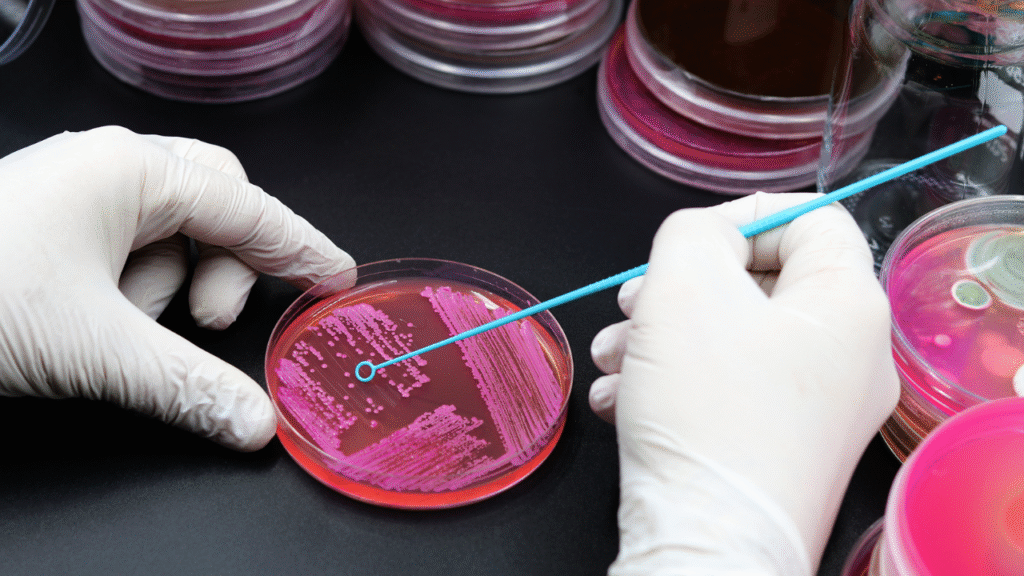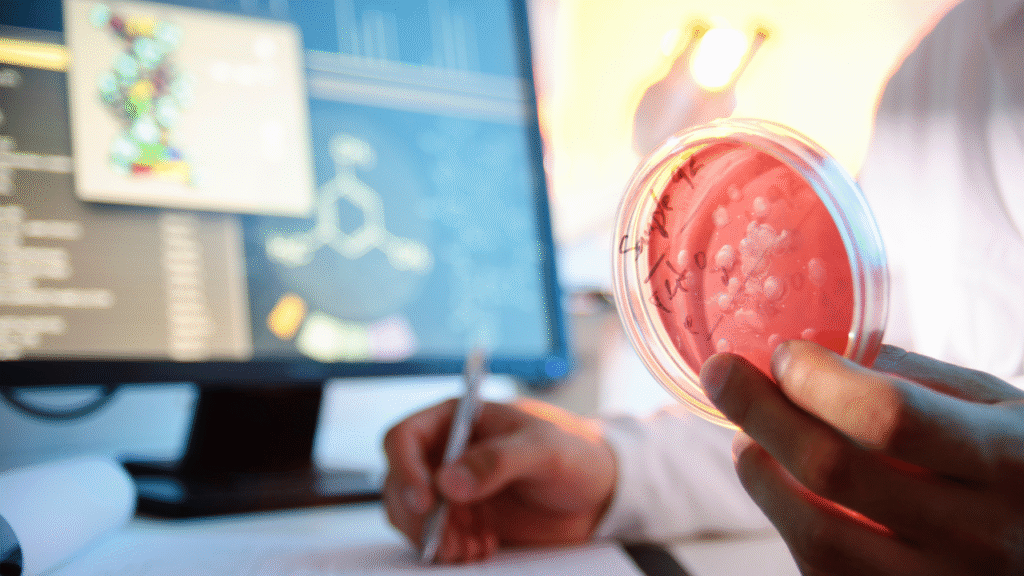Microbiology techniques in pharmaceuticals are the most critical skill sets a microbiology professional can master. These techniques are highly sensitive, and any minor error, contamination, or mishandling can lead to inaccurate test results, product rejections, regulatory non-compliance, and in some cases, patient risk.
When microbiological data comes into question, it often triggers a detailed deviation investigation that consumes significant time and resources. That’s why it is essential for every microbiologist working in pharmaceuticals to be proficient in the core microbiology techniques that form the backbone of environmental monitoring, sterility testing, microbial limits testing, and contamination control.
Let’s explore some of the most essential microbiology techniques in pharmaceuticals. We will also look at why they matter and what makes them so critical to achieving reliable results.

Why Microbiology Techniques Are So Sensitive?
Before we get into individual methods, it’s important to understand why microbiology techniques require such care. Unlike many chemical assays, microbiological testing deals with living organisms that can multiply, move, and persist in unexpected ways. A single lapse in aseptic practice or incorrect pipetting can introduce contaminants or cause inaccurate counts. This is why pharmaceutical microbiology labs operate under strict Good Manufacturing Practices (GMP) and robust Standard Operating Procedures (SOPs).
Even the best-designed laboratory can be compromised by poor techniques, as it depends on microbiologists. That’s why training, validation, and continual monitoring of proficiency are essential.
Let’s look at the core microbiology techniques you must master to maintain the highest standards of accuracy in the pharmaceutical industry.
1. Plating Techniques
Streak Plate Technique
The streak plate technique is used to isolate pure colonies from a mixed culture by gradually thinning out the sample over the agar surface. This technique is essential for identifying individual microorganisms, performing microbial identification, and confirming the purity of cultures. In pharmaceuticals, streak plating helps ensure that contaminants are identified accurately.
Spread Plate Technique
In the spread plate method, a measured volume of diluted sample is evenly distributed over the agar surface with a sterile spreader. This technique allows for the enumeration of microorganisms in a sample, which is crucial for microbial limits testing.
Pour Plate Technique
Pour plating technique involves mixing the diluted sample directly with molten agar and pouring it into a petri dish, where colonies grow both on the surface and within the medium. This method is useful for counting microorganisms present in low numbers or for testing anaerobic bacteria. Proper execution ensures accurate microbial counts (bioburden), a vital parameter in product release testing.
Why Important: All plating techniques require thorough aseptic handling, precise dilution, and proper incubation to deliver valid colony counts that directly impact batch release and compliance.
2. Serial Dilutions
Serial dilution involves stepwise dilution of a sample to reduce the concentration of microorganisms to a countable range. For example, if a sample has too many bacteria to count, diluting it 1:10 multiple times makes it possible to plate and quantify them accurately. This technique is necessary in microbial enumeration, bioburden testing, and validation studies.
Why Important: Incorrect dilution factors or improper mixing can lead to drastically wrong counts.
3. Pipetting Techniques
Pipetting may look simple, but precision pipetting is the foundation of microbiological accuracy. Every transfer, whether adding diluent, media, or sample, must be performed with calibrated pipettes, consistent technique, and careful attention to avoid air bubbles or cross-contamination.
Why Important: Variability in pipetted volumes directly affects dilutions and microbial counts. In a pharmaceutical lab, even a small error can compromise the integrity of your results.
4. Aseptic Techniques
Aseptic technique involves all practices used to prevent contamination of samples, reagents, and the laboratory environment. This includes working within laminar airflow hoods, flame sterilization of tools, use of disinfectants, and personal protective equipment.
Why Important: Aseptic technique is the most critical microbiology technique in pharmaceuticals because any contamination can cause false positives, failed tests, or worse, releasing a contaminated product.
5. Weighing
Weighing of media components, powders, or samples must be performed on calibrated balances. Even minor deviations in weights can alter media composition or concentration, impacting microbial growth and test results.
Why Important: Incorrect weighing leads to invalid media preparation and unreliable test performance, requiring repeat testing and deviation reporting.
6. Media Preparation and Sterilization
Culture media must be prepared according to validated formulations and sterilized (usually by autoclaving) to destroy any contaminants. Media must be tested for sterility and growth promotion before use.
Why Important: Incorrect pH, sterilization failures, or expired media can lead to invalid results. Media preparation is a fundamental microbiology technique that supports the reliability of all microbiological assays.
7. Gram Staining
Gram staining is a differential staining technique that classifies bacteria as Gram-positive or Gram-negative based on cell wall properties. In pharmaceuticals, it is routinely used for the identification of isolates and contamination tracking.
Why Important: Accurate Gram staining is essential for identifying microbial contaminants quickly during investigations or environmental monitoring excursions.

How to Ensure Accuracy in Microbiology Techniques?
Mastering these microbiology techniques in pharmaceuticals requires more technical knowledge than theoretical knowledge. It requires discipline, attention to detail, and a mindset of continuous improvement. Here are some best practices to keep in mind:
- Follow SOPs Rigorously: Always refer to the approved procedures for every test.
- Validate Your Techniques: Regular proficiency assessments ensure consistent performance.
- Focus: Always stay fully focused on the task at hand. Remember, you are working with microorganisms, and even a slight lapse in attention can lead to serious consequences. Always assume that the worst can happen if you are not alert.
- Practice Good Asepsis: Keep your work area clean, disinfected, and organized.
- Stay Current: Stay up to date on the regulations and best practices.
Common Errors and Their Consequences
Even experienced microbiologists can make mistakes. Here are some examples of common errors and what they can lead to:
- Improper Pipetting: Leads to dilution errors and inaccurate colony counts.
- Inadequate Aseptic Technique: Introduces contaminants, resulting in failed sterility tests.
- Incorrect Incubation Conditions: Causes poor growth or overgrowth, invalidating tests.
- Failure to Verify Media: Can result in using non-sterile or inactive media.
In every case, these issues trigger deviations, investigations, and sometimes costly delays.
The Role of Microbiology Techniques in GMP Compliance
Good Manufacturing Practices (GMP) are the backbone of pharmaceutical quality systems. Microbiology techniques are integral to GMP compliance because they directly impact:
- Product Sterility
- Environmental Monitoring
- Validation of Processes
- Raw Material Testing
- Release Testing
Any failure in microbiological testing is treated with the utmost seriousness because it can indicate systemic quality issues. This is why pharmaceutical companies invest heavily in training, validation, and continuous monitoring of microbiology practices.
Final Thoughts
Microbiology techniques in pharmaceuticals are among the most sensitive and critical processes in the manufacturing environment. By mastering these microbiological techniques, you protect your work’s integrity, support your company’s reputation, and contribute to a culture of quality and compliance.
Remember, in pharmaceutical microbiology, there is no room for shortcuts.
If you’re a microbiologist working in pharmaceuticals, continuously refine your skills to become successful. Whether you’re preparing culture media or performing environmental monitoring, your commitment to excellence in microbiology techniques will set you apart as a reliable professional.
You may be interested in reading 5 Essential Microbiology Lab Practices to Prevent Cross-Contamination.




